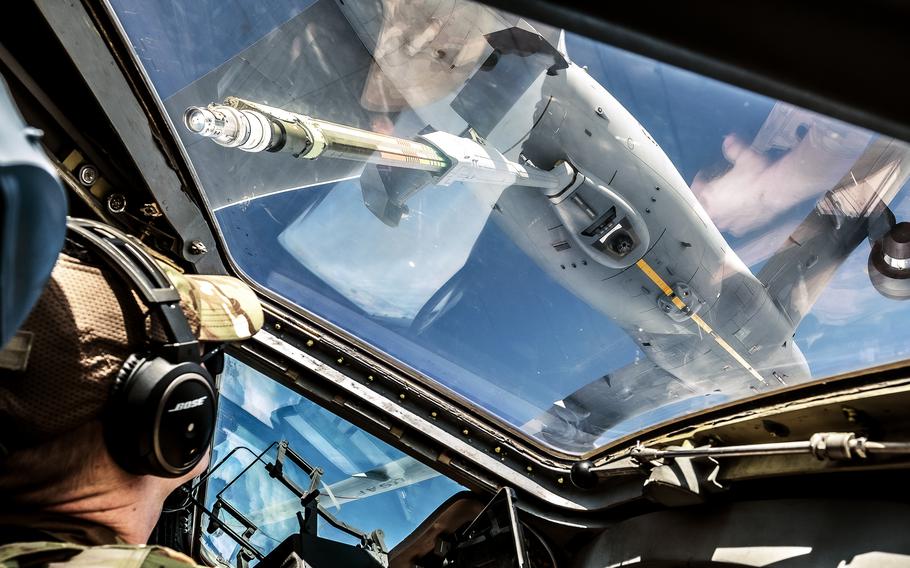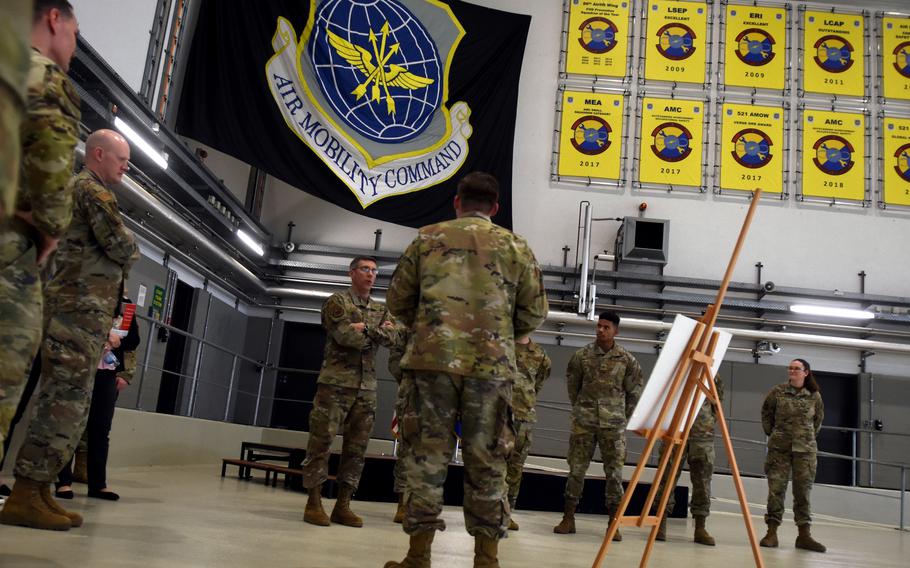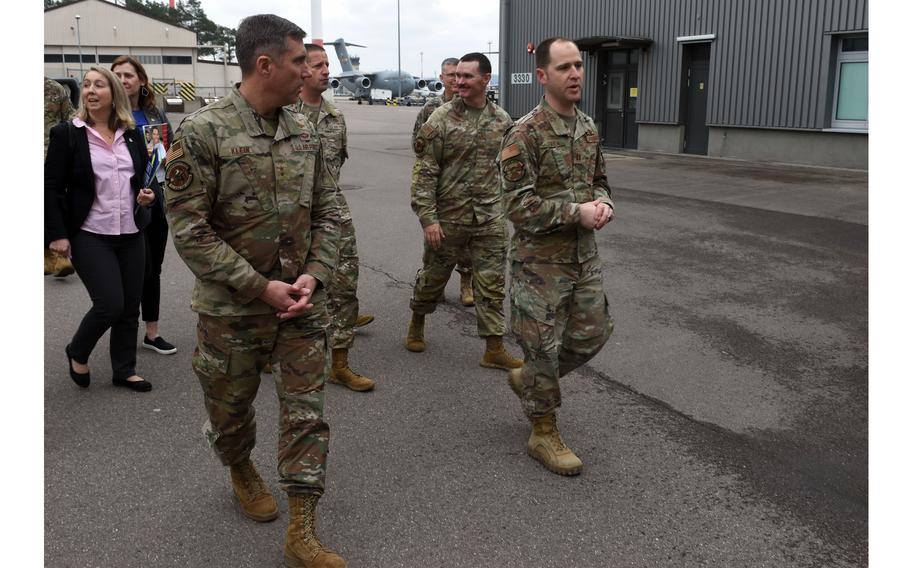
Air Force Capt. Christopher Allen co-pilots a C-17 Globemaster to be refueled by a KC-46 Pegasus over the eastern seaboard March 9, 2023, during Exercise White Stag. The training was preparation for Mobility Guardian 2023, Air Mobility Command’s largest exercise. ( Joseph Morales/U.S. Air Force)
RAMSTEIN AIR BASE, Germany — The Air Force is moving a small expeditionary team from Europe to a vast logistics exercise this summer in the Western Pacific region, in a demonstration of flexibility that comes months after the service’s general in charge of mobility warned of potential conflict with China in the near future.
This is the first time that Mobility Guardian, which will include thousands of U.S. service members and others from partner nations, will be held outside the United States since the biennial exercise’s inception in 2017.
The 1,800 airmen will practice moving personnel and gear in conflict scenarios, as well as airlifts, air refueling and medical evacuations.
In a conflict or humanitarian disaster, small teams of aerial porters, aircraft maintainers and others would join contingency response forces, airmen who are first on the ground to open airfields.
Mobility Guardian is part of a larger effort to transform air mobility operations from a network of stationary hubs to small, agile units that can “lift and shift” at a moment’s notice, Maj. Gen. John Klein, commander of the Air Force Expeditionary Center, said during a recent interview.

Maj. Gen. John Klein, commander of the Air Force Expeditionary Center, center left background, visits with members of the 521st Air Mobility Operations Wing at Ramstein Air Base in Germany on Feb. 23, 2023. Klein met with air mobility personnel in Europe and the Pacific theater in February and March to see what challenges they are facing. (Jennifer H. Svan/Stars and Stripes)
“We want to speed that whole thing up” to allow contingency forces to “then go forward to another location and open” up another airfield, Klein said.
The Air Force’s mobility wings have trained together in the past. But this is the first time a team “will swing to the other side of the world to support mobility operations,” said Col. Dan Cooley, commander of the 521st Air Mobility Operations Wing at Ramstein.
It shows that the command “is not restricted by lines on a map,” he said, adding that the task is not as simple as “getting on and off a plane.”
“We cannot expect the permissive environment we operate in today to be as permissive in a future conflict,” Cooley said.
The 521st has nine squadrons that support U.S. and coalition forces from 19 locations around Europe, the Middle East and Africa. Its main hub is at Ramstein.
In the past two years, it has played a big role in evacuating Afghan refugees and providing logistical support for NATO following Russia’s invasion of Ukraine in early 2022.
The operations were “a little bit more ad hoc in that we would just send folks to respond to a request,” said Chief Master Sgt. Jeremiah Grisham, the command chief of the wing.
He cited the recent supply of aid to Turkey after earthquakes in the south-central part of the country killed tens of thousands of people.

Maj. Gen. John Klein, left, commander of the Air Force Expeditionary Center, visits with airmen of the 521st Air Mobility Operations Wing at Ramstein Air Base in Germany on Feb. 23, 2023. A small team from Europe will participate in a large-scale mobility exercise this summer in the Pacific theater. (Jennifer H. Svan/Stars and Stripes)
About 25 mobility airmen from Ramstein and Spangdahlem air bases jumped on a C-130 to help airmen in Turkey with the initial influx in the days after the first major quake Feb. 6, Grisham said.
But while the Europe-based logistics airmen have kept busy on the Continent, the Middle East and in Africa, the Indo-Pacific region remains the Pentagon’s long-term overseas priority.
China this week sent dozens of military aircraft, an aircraft carrier and other ships close to Taiwan’s east coast in a show of force that followed Taiwanese President Tsai Ing-wen’s visit to the United States.
China claims the democratic, self-governing island as its own, and has used military might to reinforce islands throughout the region that also are claimed by some U.S. partners and allies.
In January, a memo to airmen from the head of Air Mobility Command, Gen. Mike Minihan, predicted fighting with China in 2025.
“I hope I am wrong,” Minihan said in the memo, which received plaudits from some on Capitol Hill who urged taking China’s military moves more seriously.
However, the Pentagon said the memo did not represent its view, while other lawmakers cautioned against framing conflict with China as inevitable.